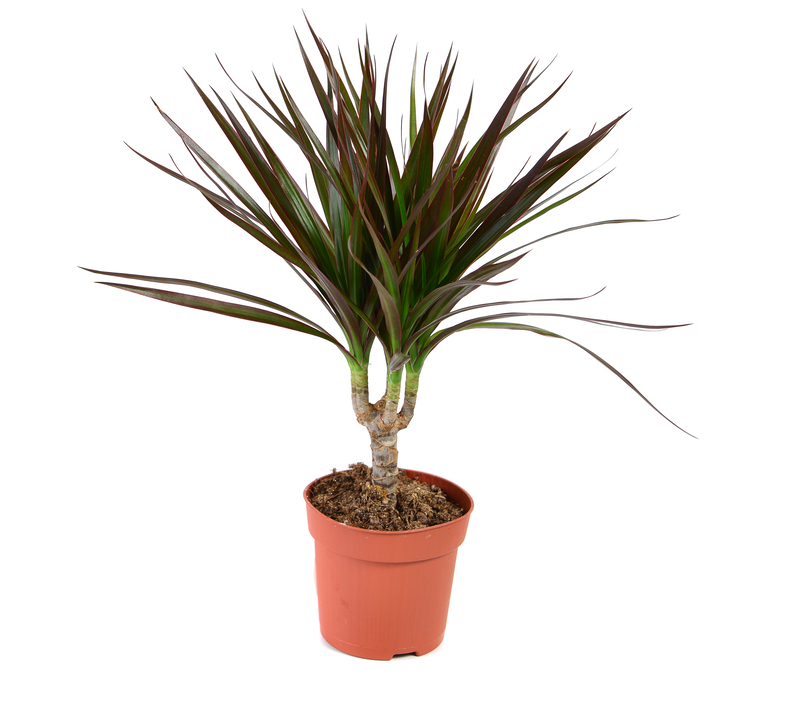Raise the Bar with Stellar Orchid Care Techniques
Posted on 22/09/2025
Raise the Bar with Stellar Orchid Care Techniques
Orchids are among the most captivating and diverse flowering plants, gracing homes and gardens all over the world. Their stunning blooms and intricate structure make them a sought-after choice for plant enthusiasts. However, growing orchids can be daunting for beginners and even seasoned gardeners without the right knowledge. If you want to raise the bar with stellar orchid care techniques, this comprehensive guide will introduce you to tried-and-true methods, innovative tips, and essential strategies for dazzling, healthy orchids year-round.
Why Orchids Demand Specialized Care
Unlike most houseplants, orchids thrive under very particular conditions. Originating from diverse climates, orchids require attention to detail, environmental control, and consistent care to really flourish. Not all orchid varieties have identical needs, but by adhering to certain orchid care best practices, you can master the art of growing these exquisite beauties.

Understanding Orchid Varieties
The Most Popular Orchids for Home Growers
- Phalaenopsis (Moth Orchids): Tolerant and beginner-friendly, with long-lasting blooms.
- Cattleya: Known for large, fragrant flowers; needs bright light.
- Dendrobium: Compact and adaptable, ideal for indoor spaces.
- Oncidium: "Dancing Ladies" with spray-like blooms, enjoy more humidity.
- Vanda: Requires excellent air circulation, prefers hanging baskets.
If you're serious about raising the bar with your orchid care routine, identifying your orchid's type is crucial. Every variety brings a unique set of care requirements that will influence your overall approach.
Optimal Orchid Care Techniques for Every Enthusiast
1. Choosing the Best Potting Mix
One of the foundational stellar orchid care techniques is selecting the right growing medium. Unlike typical houseplants, orchids never grow in regular soil. Most orchids are epiphytic, meaning they naturally grow on trees and absorb moisture from the air and rain. While some terrestrial orchids do grow in the ground, even these need special care.
- Bark Mix: Best for Phalaenopsis and Cattleyas. Allows excellent drainage and root aeration.
- Sphagnum Moss: Holds moisture well but can cause root rot if overwatered. Ideal for seedlings.
- Coconut Husk Chips: A sustainable alternative providing moisture and airflow.
- Perlite or Charcoal: Used to increase drainage and prevent medium compaction.
*Mix and match these ingredients to create a blend suited to your specific orchid.*
2. Mastering Watering Techniques
Overwatering is the most common reason orchids decline. Proper orchid watering techniques can be summarized as "less is more." Here are essential tips:
- Soak, Don't Spritz: Water thoroughly once the potting medium is almost dry--typically every 7-10 days.
- Drain Well: Never let orchids sit in water; empty saucers right after watering.
- Monitor Humidity: Supplement humidity around the plant (aim for 40-70%) using pebble trays or humidifiers.
- Use Lukewarm, Non-Chlorinated Water: Orchids can be sensitive to cold or treated water.
- Observe Root Color: Green roots mean well-watered, while silvery-white indicates dryness.
Tip: Water in the morning to give leaves and crown time to dry, reducing the risk of rot.
3. Providing the Right Lighting
Lighting plays a transformative role in successful orchid cultivation. Too little light, and your orchid won't bloom; too much light can scorch foliage.
- Indirect Light: Most popular orchids thrive in bright, filtered light. An east or west-facing window with a sheer curtain works beautifully.
- Direct Sunlight: Avoid it for most orchids, but some varieties, like Vanda, can tolerate short exposure.
- Artificial Grow Lights: Utilize LED grow lights if natural light is insufficient, keeping lamps 12-18 inches from leaves.
- Leaf Color as Indicators: Dark green leaves = too little light; yellowish-green = optimal light; yellow or scorched = too much light.
By optimizing your orchid's light exposure, you'll encourage robust growth and frequent blooming.
4. Ideal Temperature and Air Circulation
Temperature and fresh airflow are two often-overlooked keys to stellar orchid care. Orchids generally prefer:
- Daytime: 65-75?F (18-24?C)
- Nighttime: 55-65?F (13-18?C)
- Temperature Drop: A nightly drop of 10-15?F encourages blooming in some varieties.
- Vigorous Air Movement: Use oscillating fans or open windows to prevent stagnant air, which deters pests and fungus.
Advanced Orchid Care: From Repotting to Reblooming
When and How to Repot Orchids
Repotting is indispensable to continued orchid health. Signs your orchid needs repotting:
- Potting mix breaks down or becomes compacted
- Roots overflow the pot or rot is visible
- Plant stops blooming or growth stalls
- Gently remove the orchid from its pot, shaking off old medium.
- Trim dead or mushy roots with sterilized shears.
- Choose a new pot only slightly larger than the old one.
- Place the orchid in the center with fresh, moistened potting mix.
- Do not water for a week, allowing roots to recover.
Stimulating Orchid Reblooms
After the first flower spike fades, many growers wonder how to prompt a rebloom. While some orchids bloom yearly, Phalaenopsis can flower multiple times annually with the following techniques:
- Let the plant rest a few weeks post-bloom before fertilizing again.
- Cut the flower spike just above a healthy node ("bump") to encourage side spikes.
- Ensure cooler nighttime temperatures (by 10-15?F).
- Regular feeding with a "bloom booster" fertilizer every 2-3 weeks.
- Consistency: Keep watering and light patterns steady to avoid plant shock.
Feeding Orchids for Vigorous Growth
Choosing and Using the Right Fertilizer
Orchids are light feeders but benefit immensely from regular, balanced nutrition. Seek out an orchid-specific fertilizer with a 20-20-20 N-P-K ratio, and always "feed weakly, weekly."
- Fertilize with a diluted solution (1/4 manufacturer's recommended strength) every 1-2 weeks during active growth.
- Flush the pot with plain water monthly to remove salt buildup.
- Switch to a "bloom formula" (higher phosphorus) when anticipating new spikes.
- Reduce feeding during winter dormancy as growth slows.
Managing Orchid Pests and Diseases
Common Orchid Pests
- Aphids: Small green insects on buds; remove with soapy water or neem oil.
- Mealybugs: Cottony clusters on leaves or roots; treat with rubbing alcohol swabs.
- Spider Mites: Webbed foliage and tiny dots; require a miticide or increased humidity.
- Scale: Hard-shelled insects on stems; remove manually, then treat.
Fungal and Bacterial Threats
Overwatering and poor air circulation often lead to rot and leaf spots. Prevent these issues by:
- Watering early in the day to allow surface drying.
- Ensuring pots and media are clean and well-aerated.
- Isolating any plant that shows signs of infection.
- Using a copper-based fungicide if needed, always as a last resort.
Professional Orchid Display and Styling Tips
It's not just about growing orchids but also presenting them beautifully. Here are pro techniques to showcase your collection:
- Acrylic or Glass Pots: Offer visibility for root health and brighten decor.
- Baskets and Mounts: Simulate orchids' natural habitat--perfect for Vandas and miniatures.
- Grouping by Species: Enhance visual impact and facilitate care consistency.
- Accessorize: Use moss, driftwood, and stones to create eye-catching arrangements.
- Stake Spikes Gently: Use orchid clips and stakes to guide stem growth without damaging tissue.

Frequently Asked Questions about Stellar Orchid Care
How do I know if my orchid needs more light?
Check the leaves: dark green = not enough light; olive/pale green = ideal; yellow or brown spots = too much light.
Can I use ice cubes to water my orchid?
Using ice cubes is not recommended. It can shock sensitive roots, especially for tropical varieties. Instead, use tepid water and soak thoroughly a few times a month.
What do I do if my orchid won't bloom?
Increase light incrementally, ensure nighttime temperature drops, and use a fertilizer higher in phosphorus. Consistency and patience are key--with the right stellar orchid care routine, reblooms will follow!
Conclusion: Elevate Your Orchid Experience
The journey to raise the bar with stellar orchid care techniques is one of passion, patience, and lifelong learning. With the guidance provided above, you'll be well on your way to growing not just healthy orchids but truly spectacular, reblooming plants that inspire admiration. Apply these advanced and classic orchid care tips--adjusting them to your home environment--and enjoy the incomparable beauty that only orchids can bring.
Elevate your orchid-growing skills today and watch your blossoms reach breathtaking new heights!

